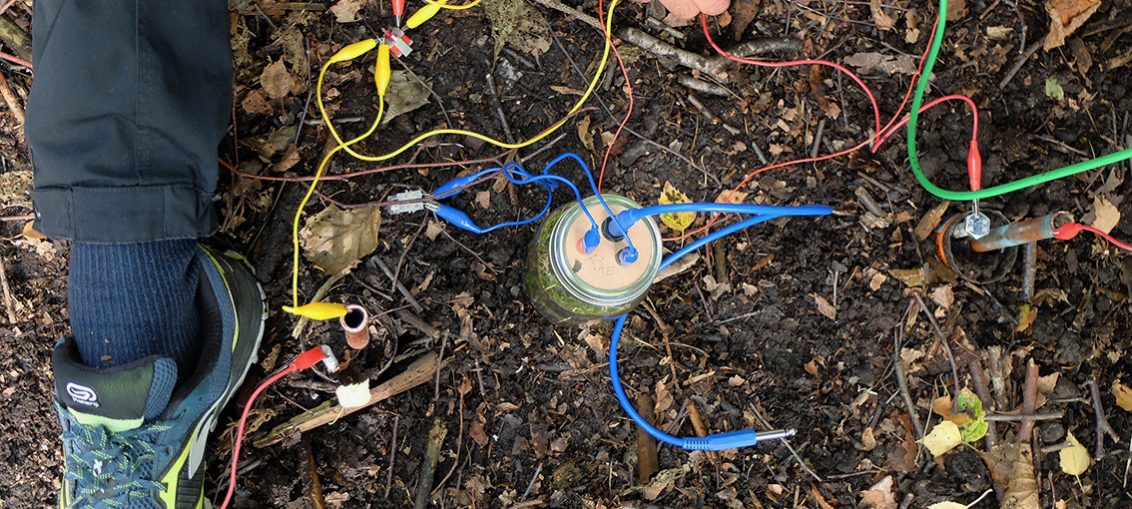
17/09/2022 Second Workshop at Longdendale Environmental Centre as GUIDEline project with Glassball Studios:
In this workshop, we continued to work on our boundary detectors; moss terrariums with carbon and aluminium layers which act as electrodes. In my test, I used moss growing on a carbon graphite felt layer (the anode), over a granular substrate of Zeolite (the electrolyte, but in the workshop, we used grit and mud collated from the boundary). The base of the jar is covered with aluminium foil (the cathode). As the moss photosynthesises and microbes do their thing – electrons are exchanged between the two electrodes generating electricity (more info on the science at end of this post). However, it is as yet unclear exactly how these moss/soil/microbial hybrids work. We also made simple earth/mud batteries – these were made with old galvanized steel rods and copper pipes stuck into the mud.
Testing the boundary detectors.

We found both the moss and mud batteries generated between 0.1 and 0.8 volts (at less than 1mA). We wanted to see if we could use the moss-powered detectors to pick up sounds transmitted through an LED (using a transformer to transmit the audio signal through the LED power source – meaning the light would be vibrating in time with the audio signal). Although our boundary detector could sonify the changing voltage of a blinking LED (ON/OFF), making a pulsing sound, and the frequency of a torch light (also On/Off but at a high frequency), it couldn’t detect the more subtle audio signals when they were transmitted through the light (using the light beam as a carrier signal (I later worked out that this is because it would need more power (amps), so we would need a few detectors connected in series).
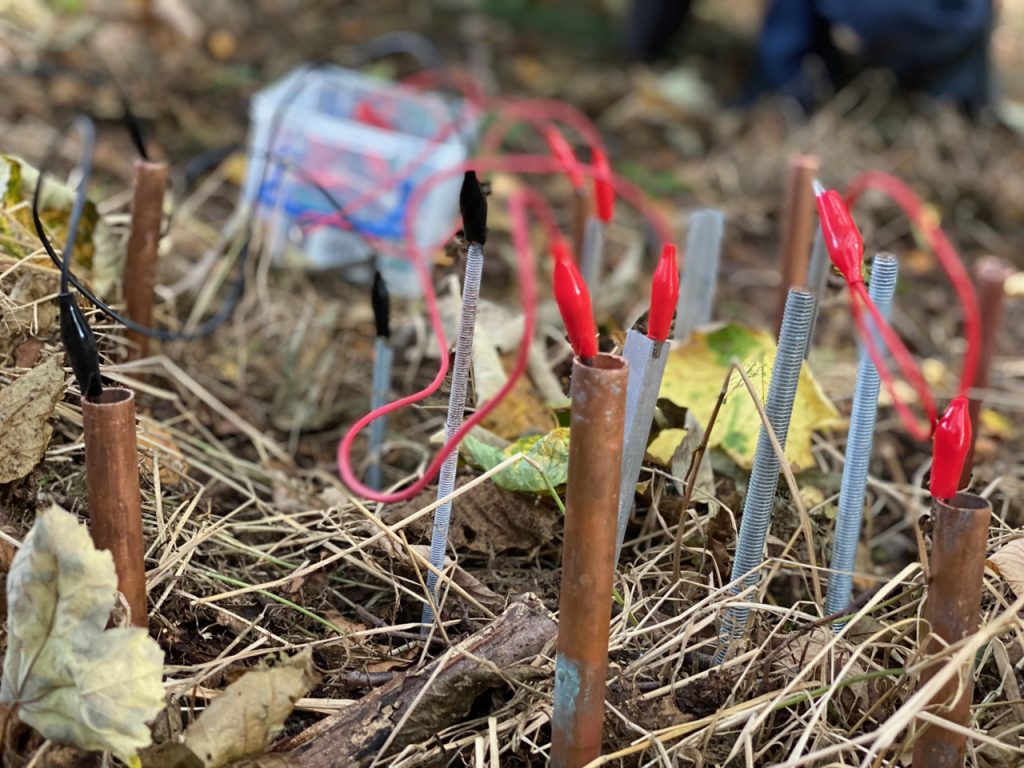
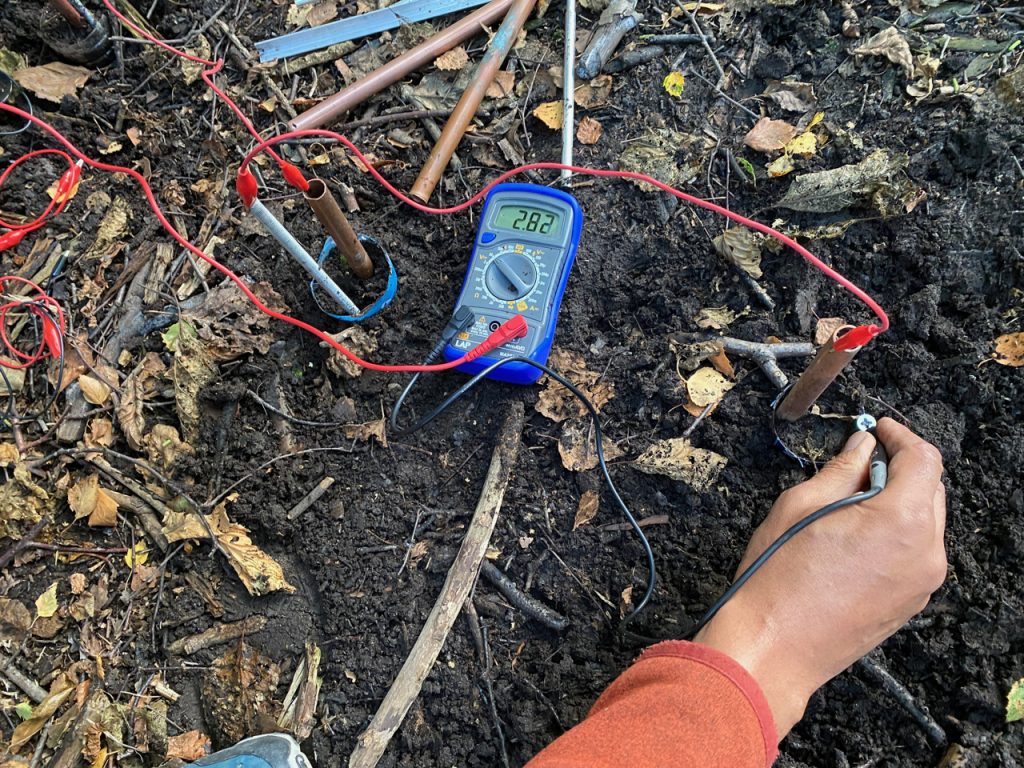
We walked into the woods (towards the boundary) and stuck the metal rods into the soil, and found a similar voltage (0.6v), connecting more near in series – we found the voltage to reduce the more distance I measured from. We also noted ho that the voltage increased when we watered the soil.
Pond battery
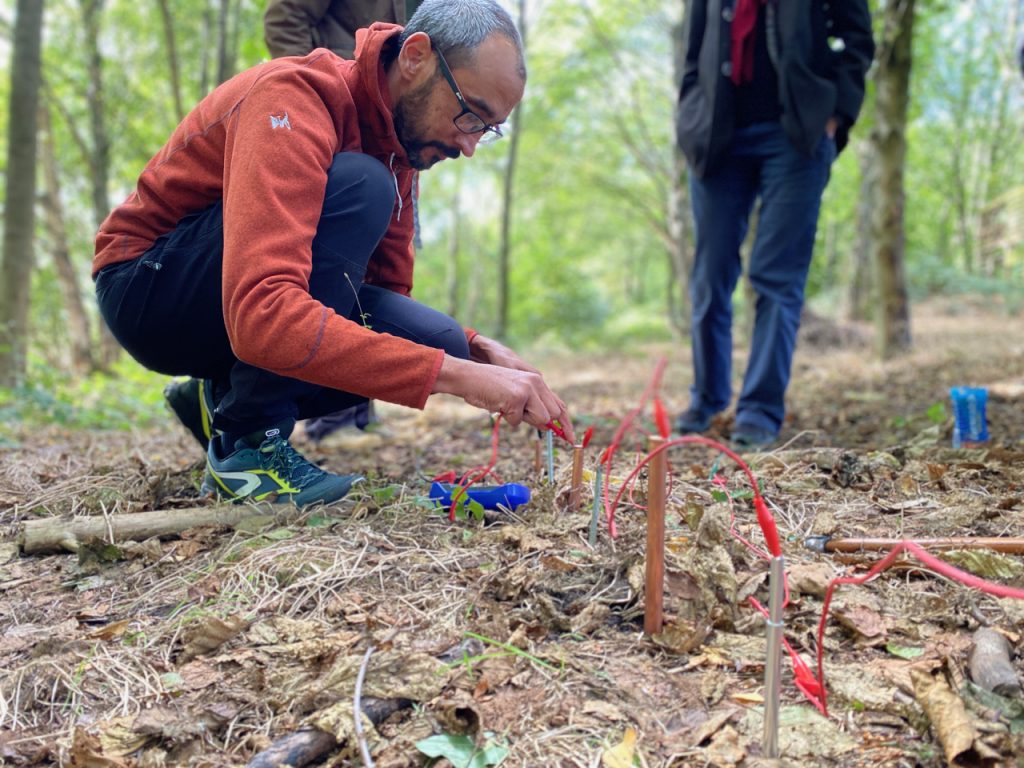
After some experiments sticking metal into the soil and measuring voltages, we found the batteries needed to be isolated from each other so we used found plastic water bottles. Using the inside of an old pond where the soil was moist (we measured 1 volt here!) We dug holes and used the soil to fill the water bottles and then submerged these back into the soil with the top 1cm showing.
We inserted 10 in a circle and connected these in series (a daisy chain) with crocodile clips. Then the moment of truth – measuring the voltage: We were all impressed when we measured a full 15 volts (still at less than 1mV). We connected an LED across these, and we were all surprised, and deeply satisfied, to see the LED glowing fairly brightly.

It was a great moment which set our thoughts off in numerous directions as we considered the different possibilities and grappled with the science. The LED would need 5-10mA to glow at full brightness – so we would need to double up the batteries and connect them in parallel to boost the amps. This will be the task over the coming months.
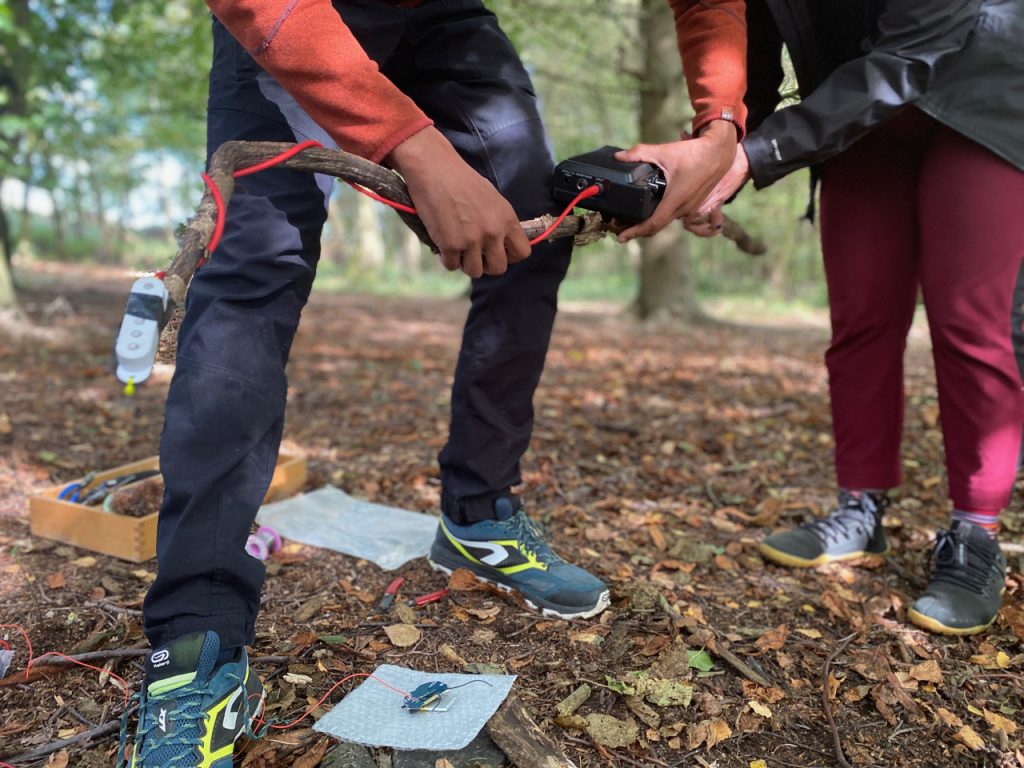
Around this excitement, we were also experimenting with transmitting sounds through electromagnetic loops attached to mobile MP£ players. We managed to create 3 loops around the pond and played with mixing (walking and waving the sensors around) between these fields of sound (see Instagram post below).
The next step will be to build on these ideas and work towards an installation or workshop for the forthcoming symposium in 2023.
See next GUIDEline post: Boundary Detectors Workshop
The GUIDEline Project is supported by Arts Council England See more about the project and Glassball Studios here…
“…Photo microbial fuel cells are bio electrochemical devices capable of harnessing solar energy and turning it into electrical current with the help of bacteria, naturally occurring in organic material. The device takes advantage of photosynthetic organisms and uses them to extract electrons, protons, and oxygen from water. Because the organic processes continue also in the absence of light, the photo microbial fuel cell will also generate electricity in the dark. Microbial fuel cells offer sustainable, low-power options for monitoring pollutants, cleaning and desalinating water, and powering remote sensors and devices..”
MICROBIAL FUEL CELLS. Bioelectrochemical devices capable of harnessing solar energy https://materiability.com/portfolio/microbial-fuel-cells/





